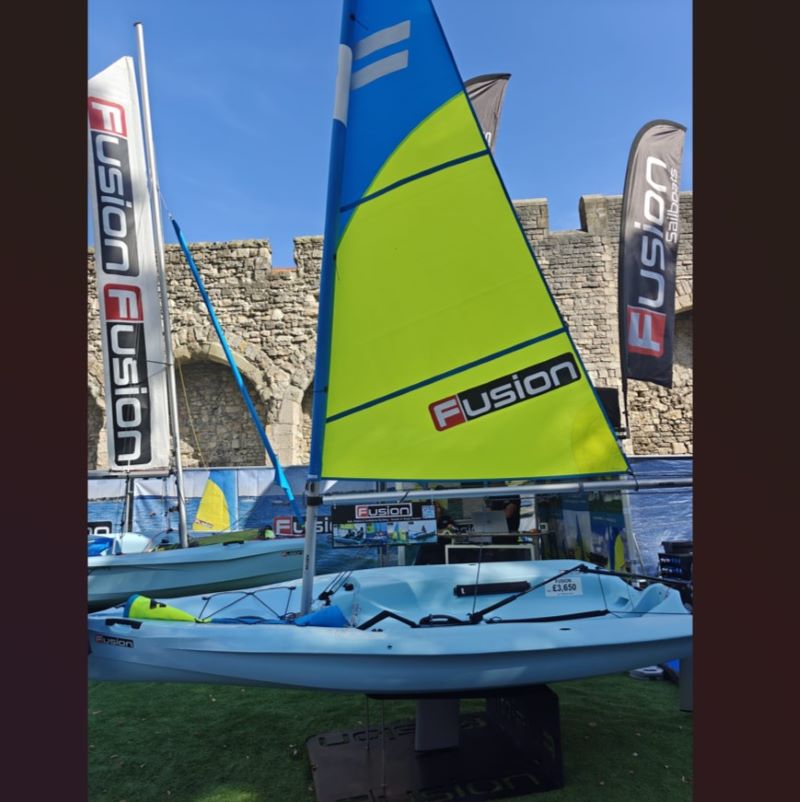By Sam Wise.
Southampton is an odd city; on the sea, historically interwoven with it, and yet it has little impact on many of the ordinary people who live here. We are surrounded by boats; cruise ships, yachts, dinghies, and all manner of other vessels, but, in my experience at least, very few of us ever get out on the water.
Grumpy old man preamble
Back in 1984, I had recently moved to the Isle of Wight. At 12 years old, my dad brought me over to the Southampton Boat Show for a visit. I remember being particularly taken with the Catalac catamaran range; these boats seemed huge and spacious to me, compared to the stripped back, race ready monohulls from the likes of Beneteau that we saw. They were expensive too, even the smallest the 8m, was out of the reach of our family; my dad bought a dinghy he was too busy to sail, and crewed on other people’s boats. Last year, I went back to the boat show, and found it a very unwelcoming and excluding experience. I was keen to see what the modern equivalent of the catamarans I had admired would be, but the boats I saw were incredibly plush, and seemed to start close to half a million pounds.
Over the intervening year, I have done a little research into inflation, and discovered that the modern world is much less accessible to those with little money than the world I remember in 1984. For example, in 84, you could buy a base model Skoda 105 saloon car for £2428, which is the equivalent of £7,308 today. You can just about get a car for £7k now, but it’s a Citroen Ami; a 2 seater electric car which can’t quite reach 30mph and has a range of less than 50 miles. If you want an actual car, with 4 seats and motorway capability, it will cost you twice that. Wither the transport options for the common man?
I decided to turn the same attention to boat prices. Looking at the prices for Catalac catamarans (I was able to source a full price list), they ranges from the equivalent of £100k for an 8m (a true “pocket catamaran”, which offered a lot of accommodation and comfort compared to a single hull boat of the same size) through £137k for a 9 metre, £243k for a ten metre, and £345k for a 12 metre. None of those is in reach for your average family, but a well paid middle class family who were really serious about sailing could conceivably find £100k, even with today’s housing prices (another thing which has MASSIVELY outstripped inflation). You can pick up the smaller Catalacs for £10-20,000 these days, but of course, an older boat will need more work and maintenance than a brand new one would. 40 years from now, will a tatty old example of one of the £500k gin palaces at the show be accessible to someone like me? It seems unlikely. If their used value is 10-20% of the purchase price, like the Catalac, you’ll be looking for £50-100k to buy one.
Don’t get me wrong, there are plenty of used boats to be had for very cheap to free, but the state of the new market, at least as evidenced by the Southampton Boat Show, is far out of reach of even relatively well off people. Where do so many customers come from for these extremely expensive vessels? I’m not sure, but it’s not from my street.
Show report
With last years’ experience in mind, I returned to the boat show on a mission to see what a relatively ordinary person could find to interest them. I set a bar of £5-7k, which I realise is out of many people’s reach for a hobby, but those of us who want to get out on the water for less money (and I am one of them) would choose other avenues than an international boat show.
Arriving at the show, I walked around the main area in Mayflower Park, and found practically nothing to fit the bill. There were plenty of high priced motor boats, there were outboard motors taller than I am (and I’m 6’3), there was even a Bentley stand, but nothing that our imaginary bloke off the street could possibly approach.


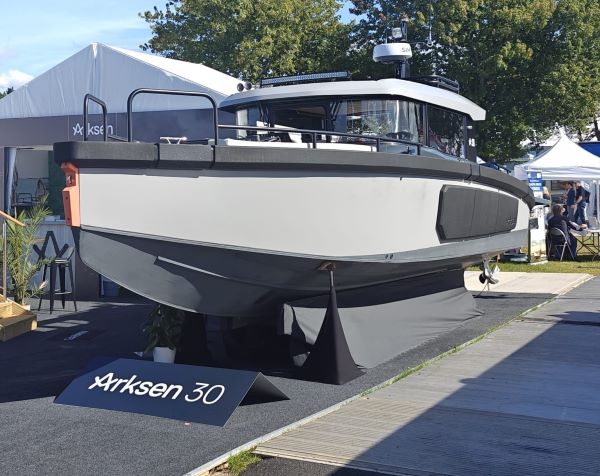
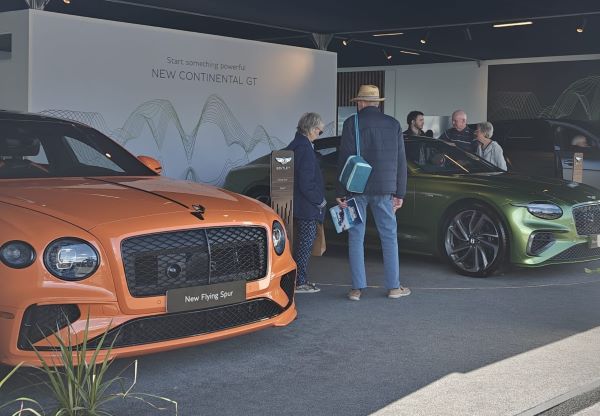
I knew that I was more likely to have luck in the dinghy section, so I made my way over there, waylaid for a while by a range of amiable lunatics planning record breaking ocean crossings on shoestring budgets; more of them in a follow-up article.
For the aspiring sailor, the fare was quite simply sailing dinghies, but with quite an emphasis on performance. From the Toppers I remember from my youth through to more modern dinghies, they are sparse, sporting rather than cruising vessels. A standout from the company that now owns the Topper design was the Topaz Maverick, a boat which can be used as a dinghy, a windsurfer or even a stand-up paddleboard. It’s unlikely to be optimal at any of those three roles, but if you want to get your family on the water with a multitude of options, this was well within our budget, starting at £3,775 (cheaper with a show discount).
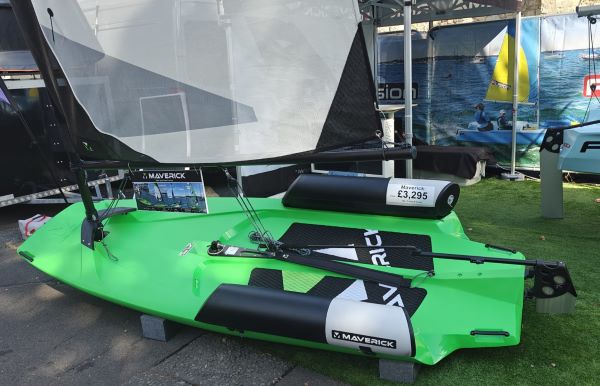
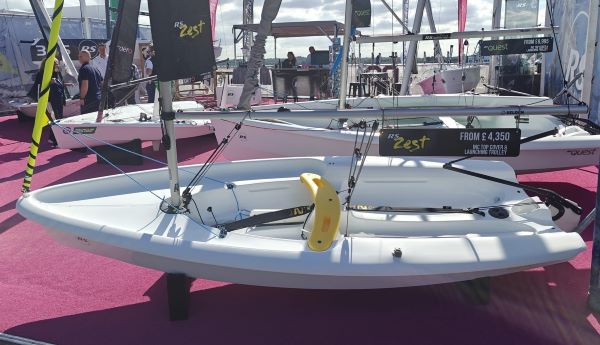
If you wanted to get on the water using an engine, your options were limited, but not zero. Everything that looked viable was made of rotomolded polyurethane plastic, which is hardwearing, inexpensive and theoretically recyclable, but don’t expect your local authority to pick it up for you. Whaly boats offer a range of very practical little boats in this line, which look almost like inflatables but are actually solid plastic. These start well within our stated price range, but don’t forget you’ll need an outboard motor, which can easily run you to an extra thousand pounds, and probably a trailer, which can be similarly expensive. A particularly interesting option was Milha’s Predator, described in some places as a “next generation kayak”. Stable enough to stand up on, taking up to a 6hp motor but also paddleable, capable of carrying two people, a deck made of opening hatches that allow you to store things below, and numerous mounts for fishing rods mean you could do a lot with this boat, although the “sit on top” nature of it might make choppy waters a little bit hairy.
If you prefer to move yourself with paddles and oars than a motor, then Paqualife had some interesting options. Their inflatable MRS Packarafts create intriguing possibilities for multi modal adventure travel. These are similar to kayaks, and when deflated, fold down to an impressively small size. A common use for them is to take on holiday in the car, but it’s not unheard of for cyclists to carry them, and then transport their bikes and themselves downriver on them. These are much more of a useable boat than the inflatable canoes you might be used to seeing in Lidl, and have many possible uses.
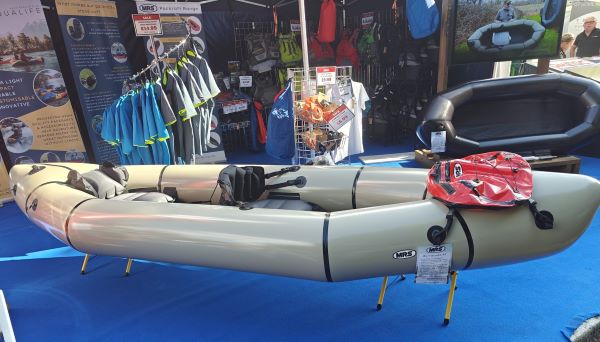
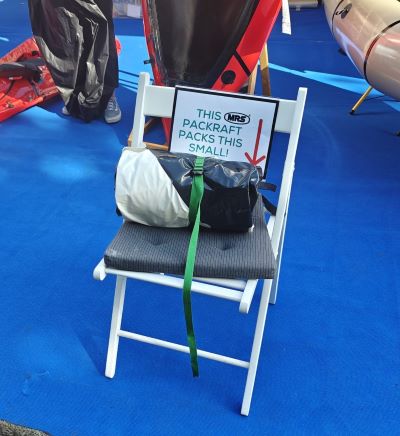
For those of us who like a more sustainable product, and perhaps entertain grand thoughts of ourselves messing about in beautiful wooden boats, there was only one option, and that was the range of nesting boats available from Adventure Boats. They have a pram dinghy (with a flat front) and a clinker dinghy (with a pointed prow), both of which dismantle into 2 nesting pieces, which makes them easy to transport and store. These give you much more of a cruising feel than the overtly sporty plastic dinghies, and come in just at the top of our budget in full sailing trim, cheaper still with oars only. They come from the home of the larger, more expensive and quite beautiful Drascombe boats, large comfortable dinghies, some even with cabins, which are quite out of the scope of this article.
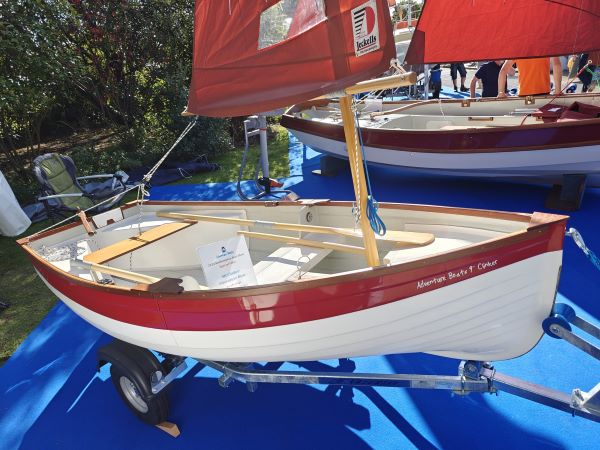
So there is something for the ordinary person at the boat show. Many of these boats could be purchased at a discount at the show, and do provide interesting ways to get on the water at relatively affordable prices. Even if actually buying a boat is out of your reach, you can make a nuisance of yourself to the vendors of hugely expensive yachts, and get a look at how the other half (who are we kidding, the other 1%) lives. If your boating dreams come a little bigger than 9 feet (the length of the Adventure Boats Clinker dinghy), or must come a little cheaper than our budget, then nil desperandum. The boat show cannot help you, but Facebook marketplace and similar absolutely can. In the past few years, I have picked up a sit on top kayak for free, a beautiful wooden kayak for £130, and a plywood native American style canoe for £50. Any of those can be carried on the roof rack of my car with the help of a couple of ratchet straps. The real jewel in the cheapskate crown is a 19ft cabin cruiser boat which I acquired, with a running outboard, a tender dinghy and an electric outboard for that, for a total of £1000. It did have to be sailed home from Portsmouth in January, in what turned out to be a force 7 gale, and you do have to factor in mooring fees, but one way or another, most of us can get out on the water, if we want. And as Mr Rat put it in Wind in the Willows, “Believe me my young friend, there is nothing – absolutely nothing – half so much worth doing as simply messing about in boats.”

